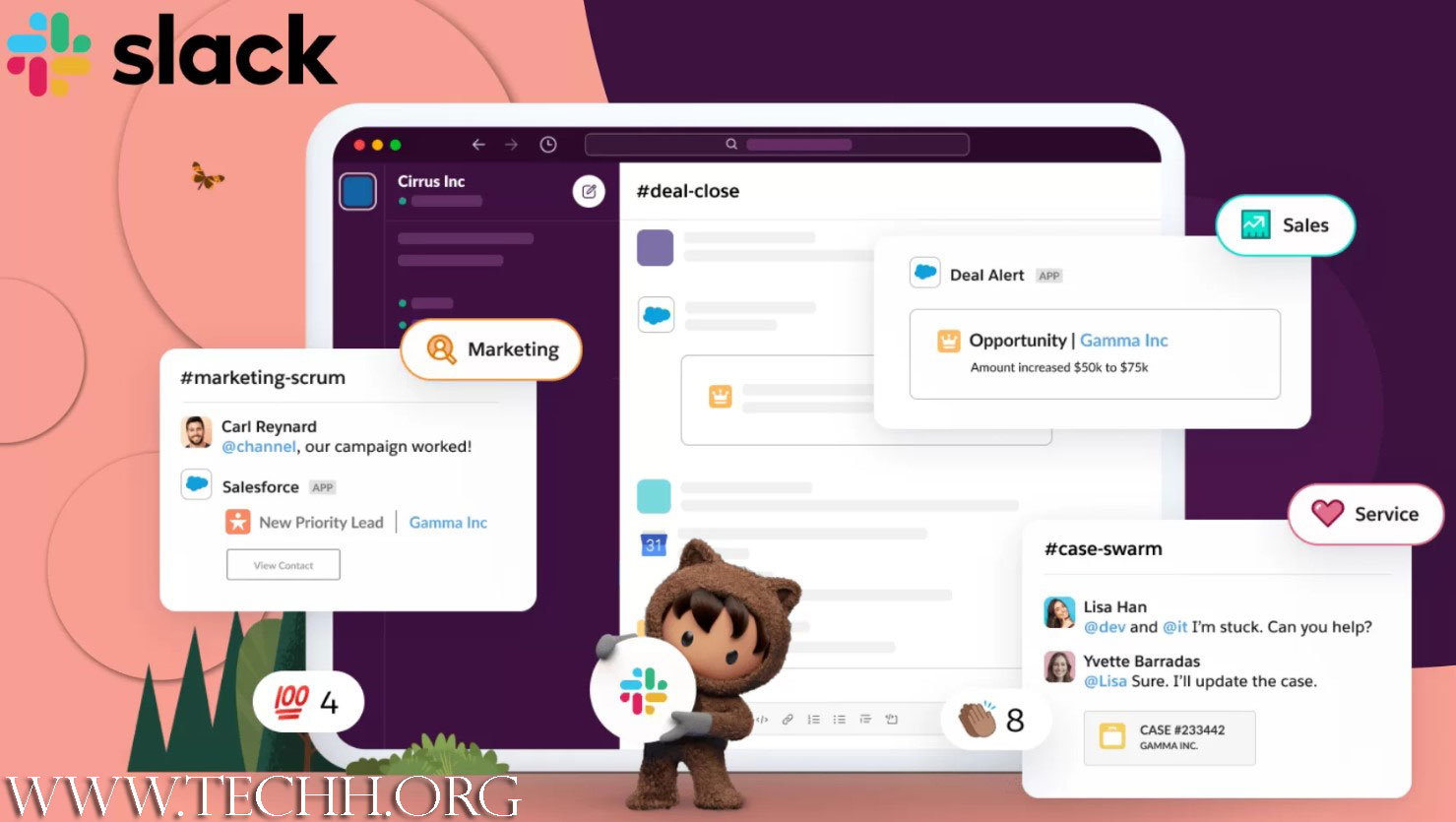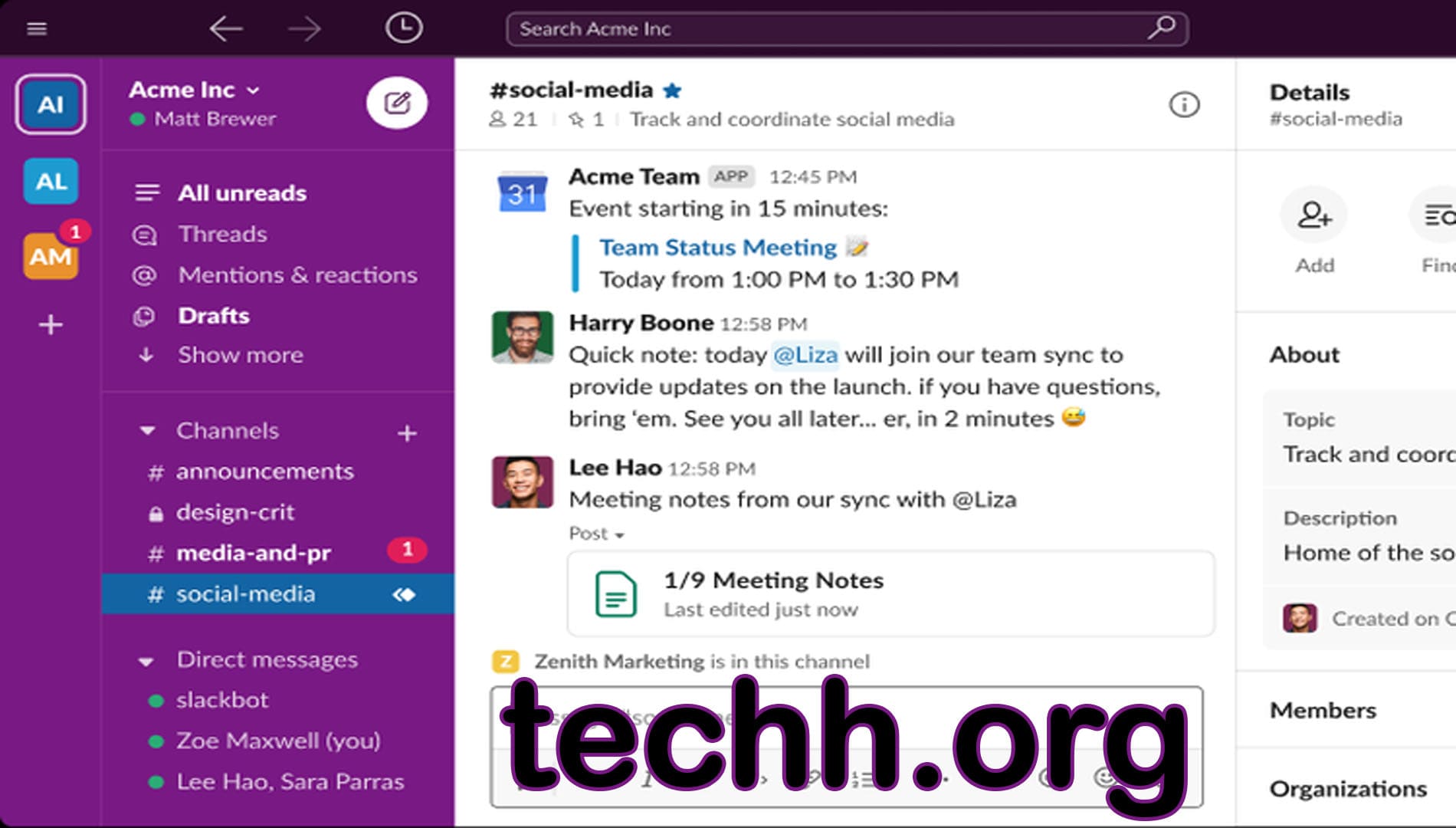Introduction
In today’s fast-paced digital era, efficient communication is vital for businesses to thrive. Slack, an innovative communication platform, has emerged as a game-changer, transforming how teams communicate and collaborate. In this article, we will dive deep into the world of Slack, its features, benefits, and its significant role in the contemporary corporate landscape.
Launched in 2013 by Stewart Butterfield, Eric Costello, Cal Henderson, and Serguei Mourachov, this software began as an internal tool for a gaming company. Its potential soon became evident, and it evolved into a standalone product, designed to improve workplace communication.
What is Slack?
Slack is a cloud-based team collaboration platform. At its core, it offers channels where teams can communicate in real-time, ensuring fluid information exchange. Channels can be public, private, or shared with external organizations.
Key Features of Slack
- Channels: Topics, projects, or teams can have dedicated channels to ensure organized conversations.
- Direct Messages: For private one-on-one chats.
- Search: Powerful search functionality to find past messages or files.
- Integration: Seamless integration with other tools like Google Drive, Trello, and more.
- File Sharing: Drag and drop files directly into Slack.
Advantages
- Increased Productivity: Real-time communication means faster decision-making.
- Reduced Emails: Conversations in channels decrease the reliance on lengthy email threads.
- Centralized Communication: All discussions, files, and tools in one place.
- Customization: With custom emojis, themes, and bots, Slack can be tailored to fit a company’s culture.
Ecosystem
this software provides an app directory with over 2,000 applications that can be integrated:
- Workflow Automation: Tools like Zapier or Workato.
- CRM: Salesforce, HubSpot.
- Development: GitHub, Bitbucket.
- Calendar & File Management: Google Drive, Office 365.
Security and Compliance in Slack
Understanding the significance of data security, this software offers:
- Two-Factor Authentication (2FA).
- Enterprise Grid: For larger organizations, with advanced security, compliance, and administrative controls.
Real-world Application
From startups to Fortune 500 companies, many organizations rely on Slack:
- NASA: Used Slack for its Mars mission, enhancing collaboration.
- Airbnb: Centralized its communication, improving productivity.
Competitors and Alternatives
While this software is influential, other platforms like Microsoft Teams, Discord, and Trello are also in the fray, each with its unique features.
The Future
With the evolution of remote work and digital collaboration, this software is constantly innovating. Features like Slack Connect, which allows multiple organizations to communicate, show the direction Slack is heading.
Conclusion
this software has undeniably set a new standard for workplace communication. Its user-friendly interface, coupled with powerful features, makes it an indispensable tool for modern businesses. As digital communication continues to evolve, Slack’s role in shaping the future of corporate collaboration becomes even more significant.




